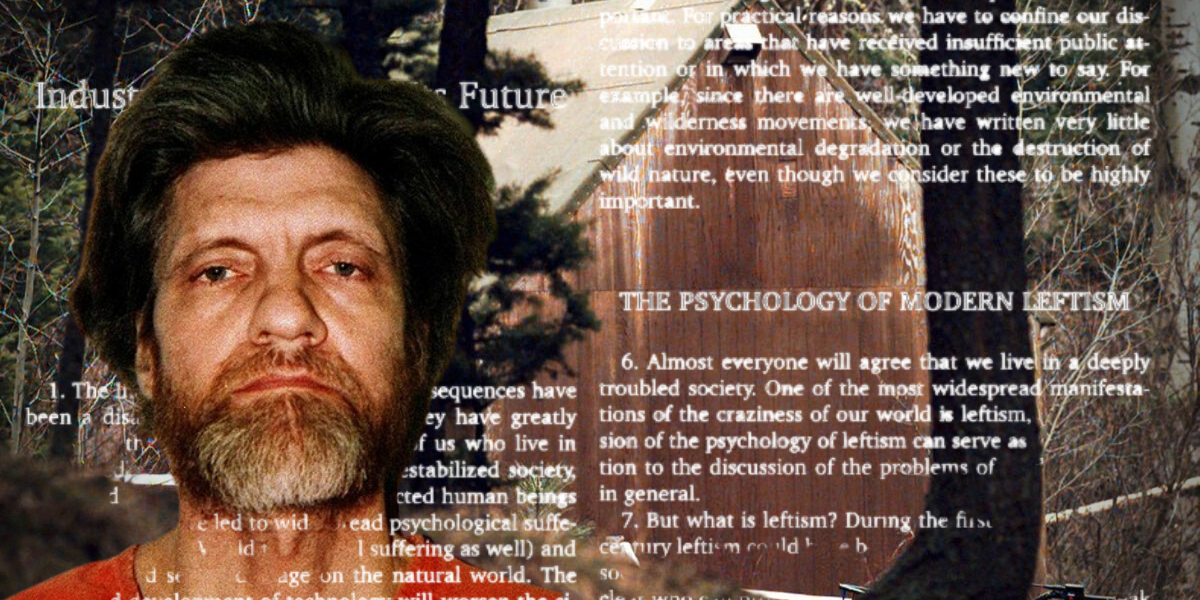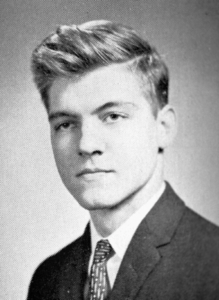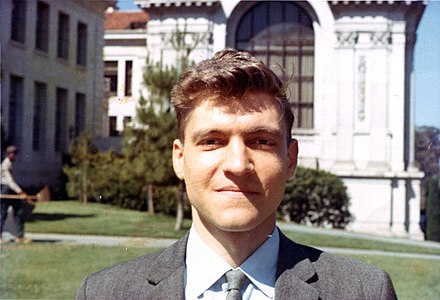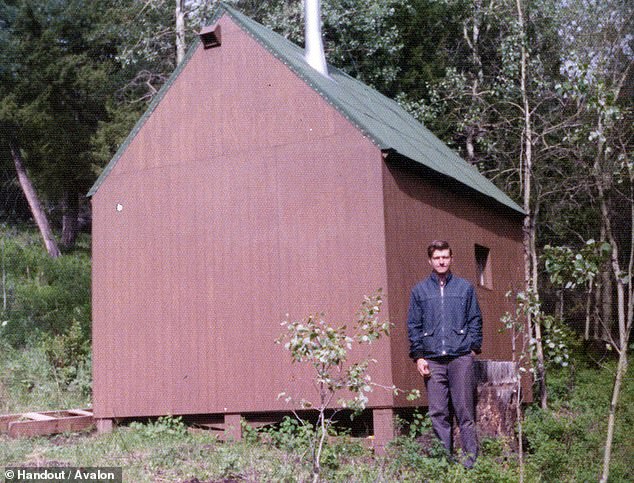By: Andrea Cipriano, MAFP
Ted Kaczynski had an IQ of 165, making him “exceptionally gifted.” Some argue his mind was his devolution into isolation and destruction.

Theodore John Kaczynski, known notoriously as the Unabomber, was responsible for a 17-year domestic terrorist bombing campaign that killed three people and injured or permanently maimed 23 others, died by suicide on June 10, 2023.
Kaczynski, 81, was found unresponsive in his North Carolina prison cell. He was serving a life sentence after being transferred from a maximum security Colorado prison because of his declining health with cancer.
Before becoming the Unabomber, Kaczynski grew up as a mathematics prodigy — but abandoned his academic career in 1969 to pursue a primitive lifestyle. While in the woods, he devolved to hate technology and believed that machinery was suppressing human freedom and potential.
Many argue that his brilliance, combined with isolation, corrupted his thinking.
He believed that his violence would draw others to pay attention to his beliefs and that he’d be taken seriously.
A ‘Brilliant but Troubled Outsider’

Ted Kaczynski’s Evergreen Park High School senior yearbook picture.
Even as a child, Kaczynski’s academic prowess showed.
One of his high school classmates, Jo Ann De Young, recalled a moment to the Associated Press where a youthful Ted carefully twisted a small piece of paper. On one side, he placed a few drops of ammonia. On the other, iodine. He gave the twisted paper to Jo Ann and directed her to uncoil it.
As the paper became flat, the chemicals on isolated sides ran together and met in the middle. The paper exploded in her hands with a harmless pop. The pair laughed.
“You’re going to get suspended,” Jo Ann recalled telling him.
“No, I’m not,” Ted replied. “I’m too smart.”
Indeed, Kaczynski was.
As a Chicago public school student, he skipped the 6th and 11th grades, and entered Harvard University in 1958 at age 16 under a mathematics scholarship.
But this wasn’t without hardship and social isolation.
David Kaczynski, Ted’s younger brother, recalled to the media: “On different occasions I asked, ‘What’s wrong with Teddy?’ and my parents said, ‘Teddy’s different.’”
After his graduation from Harvard, Kaczynski worked in academia.
In 1962, Kaczynski enrolled at the University of Michigan, earning his master’s degree in 1964 and a doctoral degree in mathematics in 1967. He was just 25. In the fall of 1967, he took a job as an acting assistant professor at the University of California, Berkeley, and quickly went up the ranks.

Kaczynski as an assistant professor at UC Berkeley in 1968.
Many knew him as “a brilliant but troubled outsider” who was often alone. He made significant contributions to complex mathematical theories, but his teaching evaluations suggested that he was not well-liked by his students because he was “uncomfortable” and “refused to answer questions.”
Professor Peter Duren, who taught Kaczynski at the University of Michigan, said, “He was an unusual person. He was not like the other graduate students. He was much more focused about his work. He had a drive to discover mathematical truth.”
However, despite his undeniable intellect, Kaczynski grew disillusioned with modern industrial society and began to develop extreme views. He became critical of technological advancements and what he saw as the dehumanizing effects of modern civilization.
Kaczynski’s persistent social and emotional problems as a young adult in academia only got worse, and in 1969, he abruptly ended his promising career at Berkeley.
Feeling a strong sense of alienation and discontent with the world, Kaczynski retreated from society. For two years, he moved back in with his parents in Lombard, Illinois, before moving to a remote cabin he and his brother David built outside Lincoln, Montana.
This cabin would become his workshop, where he built bombs for 17 years.

Kaczynski soon after the cabin in Lincoln was built.
A Monster’s Den: Montana Cabin
Beginning in 1971, Kaczynski’s Montana cabin fed his reclusive lifestyle. He was cut off from the outside world and focused on subsistence living.
With no sewage hookup, he used his own biological material to fertilize his vegetable garden, and would only ride into town on his bicycle for supplies or long visits to the public library. He lived without heating or electricity, and relied on a wood-burning stove for warmth and cooking.
It was in the little town of Lincoln, with a population of 1,000, where locals called him “The Hermit.”
A neighbor said the 10-foot-by-12-foot cabin was “wall-to-wall books.” It wasn’t until the FBI later raided the property that they discovered the cabin’s shelves were littered with bomb parts, chemicals, and baking powder containers. He had several firearms — including a handmade gun hidden within his cluttered space.
The only sense of normalcy: a basic sleeping cot, two tiny windows, and a table and chair.
It was inside this wilderness retreat that the Unabomber was born.

Photos the FBI took of inside the Unabomber’s cabin.
Unabomber: ‘UNiversity, Airline, BOMBer.’
In a series of heinous acts spanning nearly two decades, Kaczynski carried out a string of bombings targeting individuals associated with modern technology. From 1978 to 1995, he sent numerous mail bombs to universities, airlines, and individuals, resulting in three deaths and injuring dozens of others.
His methodology inspired his name: UNABOMB is derived from the UNiversity and Airline BOMBing targets.
All of his attack choices were related to technology in some respect — either as academic leaders in computer science, electrical engineering, or planes that symbolized the growing technology industry.
His bombs were often made with household items, like a cigar box, wooden parts, or untraceable scrap material that he could obtain anywhere. He purposely left misleading clues in the devices and took extreme care in preparing them to avoid leaving fingerprints.

Unabomber bomb shrapnel, via FBI files.
How was Ted Kaczynski caught?
In 1995, Kaczynski forced The Washington Post and The New York Times to publish his anti-technology rant, “Industrial Society and Its Future.” Today, this 35,000-word piece is more commonly known as the Unabomber Manifesto.
The decision to publish for the public to read his thoughts was made at the urging of federal authorities, considering the writer said he would stop his terroristic acts if a national publication shared his writing.
Ultimately, the widespread nature of his thoughts was his downfall.
Kaczynski’s brother, David, and David’s wife, Linda Patrik, recognized his work immediately and started to put the pieces together that the domestic terrorist was, in fact, Ted.
David later told the media that he wrestled with the painful question about what to do with his mentally ill brother. He didn’t want him to face the death penalty, and yet, he dreaded the prospect of further attacks.
“The consequences could be death no matter what we did,” David said.
David and Linda turned to the FBI, and provided additional writing samples that were analyzed with linguistic analysis at the Bureau. Ultimately, the FBI knew they had their guy, and arrested Kaczynski in his cabin on April 3, 1996.
In 1998, Ted Kaczynski pleaded guilty to his crimes and was sentenced to life imprisonment without the possibility of parole. His case continues to be studied by psychologists, criminologists, and scholars as an extreme example of how intellectual prowess can be tragically misused.

Theodore Kaczynski looks around as he is led by U.S. Marshals into the federal courthouse in Helena, Mont., on April 4, 1996.
Love this post? Meet the Author.
Andrea Cipriano is the Digital Content Specialist at Uncovered, where she writes for the twice-weekly true crime newsletter, The Citizen Detective. Andrea graduated with a Master of Arts in Forensic Psychology from John Jay College of Criminal Justice, where she focused on researching and peeling back the criminal mind. Andrea believes that it’s never too late for justice.
Uncovered has built a community for thoughtful true crime discussion, advocacy, and comprehensive cold case research. We are the hub for novice and experienced researchers alike, helping members further develop their citizen detective skills. Sound like something you’re interested in? Join our community. Together, we can make a difference.
